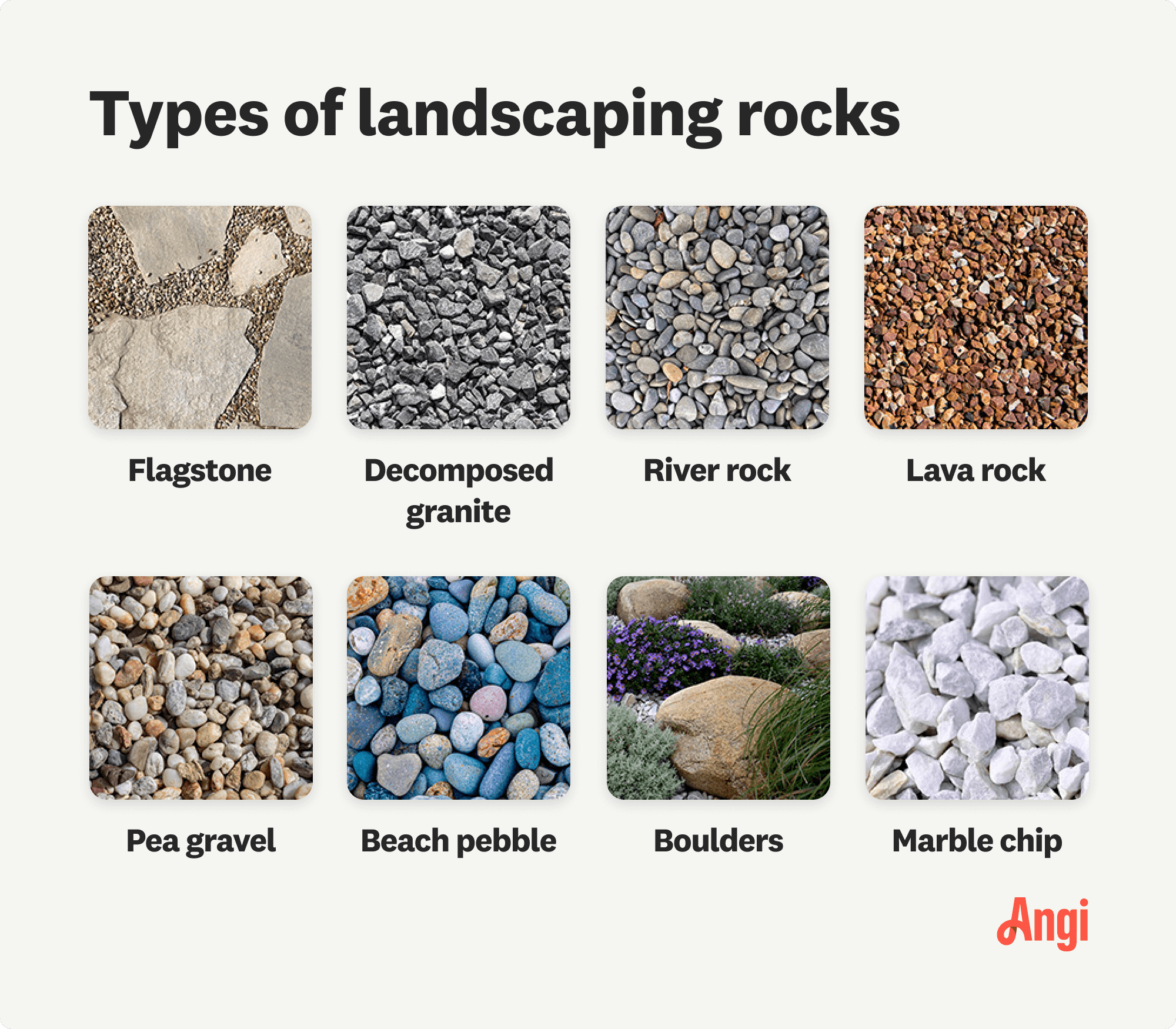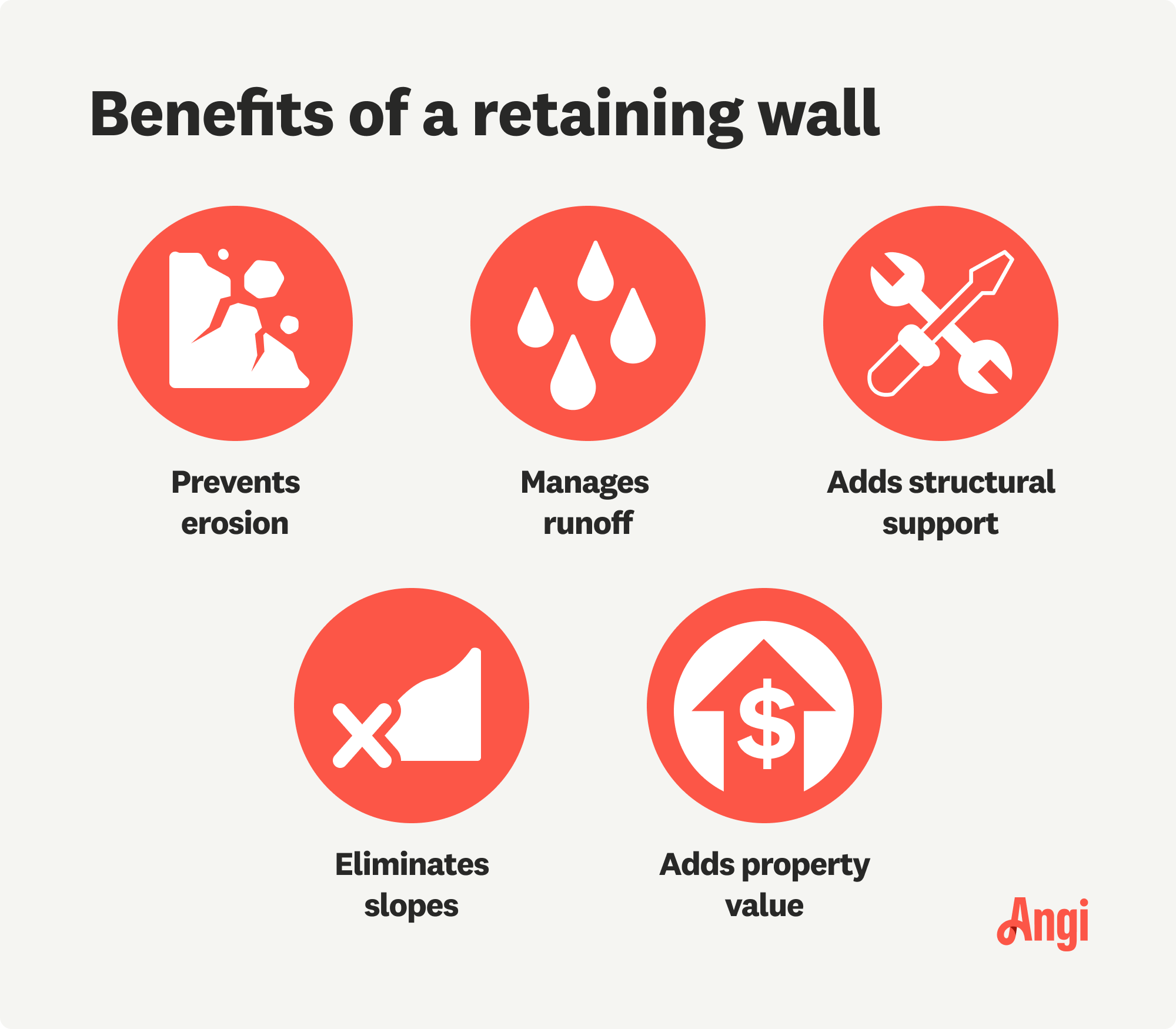
Xeriscape costs depend on materials, the size of your yard, and if you DIY. This guide will help you determine what your xeriscaping project will cost.
Stabilize your soil with these erosion control strategies


Sloped and hilly land is vulnerable to erosion, which can cause a number of issues, including soil damage, poor plant growth, and structural and aesthetic problems. Fortunately, there are plenty of measures you can take to prevent it from washing away your yard. Below, we’ll explain how to stop erosion on a slope in several different ways, including with mulch, plants, and riprap.
Laying mulch is one of the easiest ways to stop erosion on a hill. Keep in mind, though, that this only works for slopes of 33% or less. You’ll start by calculating how much mulch you need. Then, you can buy the mulch from a nearby home improvement store or have it delivered by a local supplier.
Before laying the mulch, you should remove any weeds on the slope. You might also want to use a pre-emergent herbicide to prevent future growth. For effective erosion control, the mulch layer should be between 3 and 4 inches thick.

Like mulch, landscaping rocks are another simple way to manage erosion on a slope. To install them, you’ll begin by removing any weeds on the hill (and, optionally, applying an herbicide). You can also install landscape edging to keep the landscape rocks in place. Then, using an iron rake, spread the landscaping rocks along the ground. It should be 2 to 3 inches deep.
Ground cover plants and shrubs can also stop erosion since their roots help keep the soil in place and protect it from movement. Plus, they can add an extra touch of natural beauty to your yard.
Just like mulch and landscaping rocks, adding ground cover plants or shrubs is a DIY-friendly landscaping project. Clear the hill of any weeds, then lightly till the soil before planting if your slope is 33% or less. (Don’t till the soil if you have a steeper slope because it can worsen erosion.)
To prevent overgrowth, you can install landscape curbing along with your plants. If you do, you’ll want to place it where the ground cover meets the grass or garden beds. Once the plants are in the ground, take time to water them each day until they’re well established.
Like mulch, an erosion control blanket sits on top of the soil. Once installed, it helps keep the soil in place underneath the blanket but lets runoff flow over it.
Like the other erosion control methods we’ve mentioned, you’ll need to clear the slope of any weeds and debris before installing one of these blankets. If you have a large hill, forestry mulching is a quick and convenient way to do this.
The next part of the process is a little more complicated. It involves digging a trench, securing the blanket with ground staples, and working the blanket around shrubs and trees. If that doesn’t sound appealing, this is a project to hand over to a local landscape grading pro.
Riprap is a layer of large rocks and stones that sits next to moving bodies of water, including oceans, streams, and rivers. Its primary purpose is to stop erosion, but it’s also used in stormwater management systems.
Riprap rocks are big and heavy, so it’s best to hire a professional for this method. In most cases, they’ll have to use heavy equipment to get the rocks in place. Plus, depending on the grade of your slope, they might also have to regrade the land.

Adding a retaining wall is another way to stop runoff from flowing downward and causing erosion. If you’re a confident DIYer, you can build a retaining wall yourself. Otherwise, it’s best to bring in a pro—especially if the wall is more than 3 feet tall.
If you’re curious about the process of building a retaining wall, here’s a quick summary. It starts with measuring and marking the location of the wall, then digging a trench and filling it with gravel. For the wall itself, a pro will lay rows of staggered concrete blocks and top everything off with a layer of capstone blocks.
If you have an extreme slope or your area receives significant amounts of rain, you should consider hiring a pro to install an exterior drainage system. A French drain, for example, can reroute water from the upper part of a slope to a safe drainage location on your property.
You can create just about any landscape design on a hill, but if you have a severe slope a professional landscaper can help install new drainage. Pooling water can lead to damaged plants and yards.
Installing a French drain is a labor-intensive project that requires numerous tools and supplies and some heavy-duty equipment. It’s a complicated job that very few DIYers are equipped to handle.
Reliable, efficient and pays close attention to detail. Will be hiring for landscaping also.
Removed weeds and volunteer trees from fence line. Removed weeds from landscaping. Cleaned gutters. Just general yard clean-up.
I called two other tree service companies, one which wanted to charge me for an estimate and could not come out until the following week and one with no response. I called Bill and he came out the next day. After explaining I was new to California and did not know a lot about the plants...
I did place a review because I was having some issues but they had not resolved it. The landscaping was fine and it looks nice but they didn't do everything they were suppose to do. I am not really happy about that because I am busy all the time. I don't have the time to pull it out all the...
I had a good experience. Jason, the owner, has a dedicated crew. They took a lot of dirt out and did a lot of landscaping. They did a nice job.
From average costs to expert advice, get all the answers you need to get your job done.

Xeriscape costs depend on materials, the size of your yard, and if you DIY. This guide will help you determine what your xeriscaping project will cost.

What are average sod installation prices? Learn how much sod costs based on factors like square footage, land prep, land condition, and more.

Looking to step up your golf game without leaving your property? This guide details backyard putting green costs to help you decide if this project is worth it.

There are reasons to grade or slope your yard beyond aesthetics—drainage is the main one. Read on and learn how to have an informed discussion with your pro.

It isn’t immediately obvious who to hire when you need to regrade your yard. Here are the contractors perfect for this critical home project.

Do your hedges need a trim? Learn how to trim hedges correctly, key tips to keep them healthy, and how to stay safe while tackling the task.